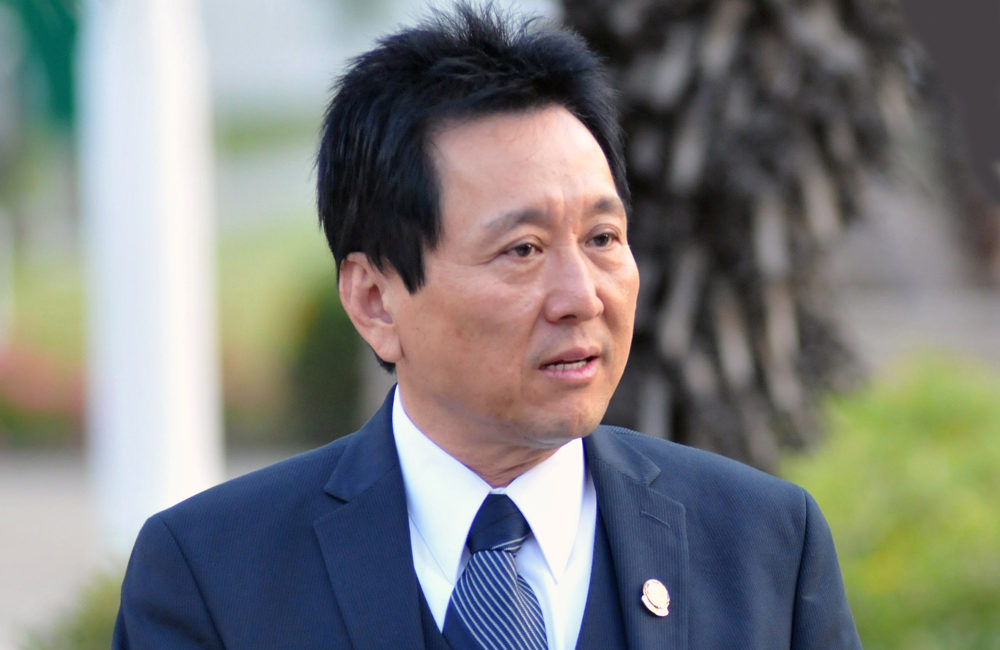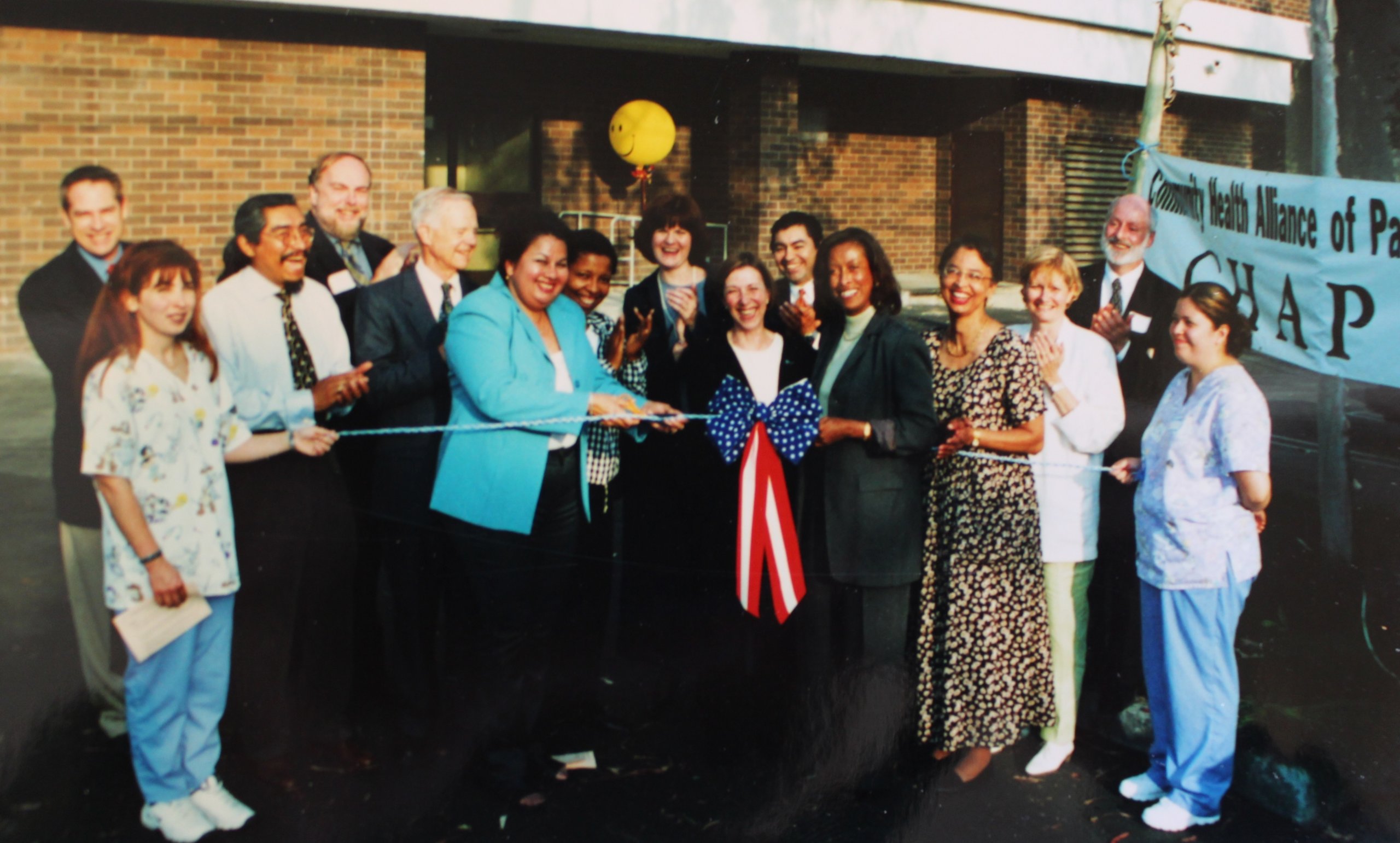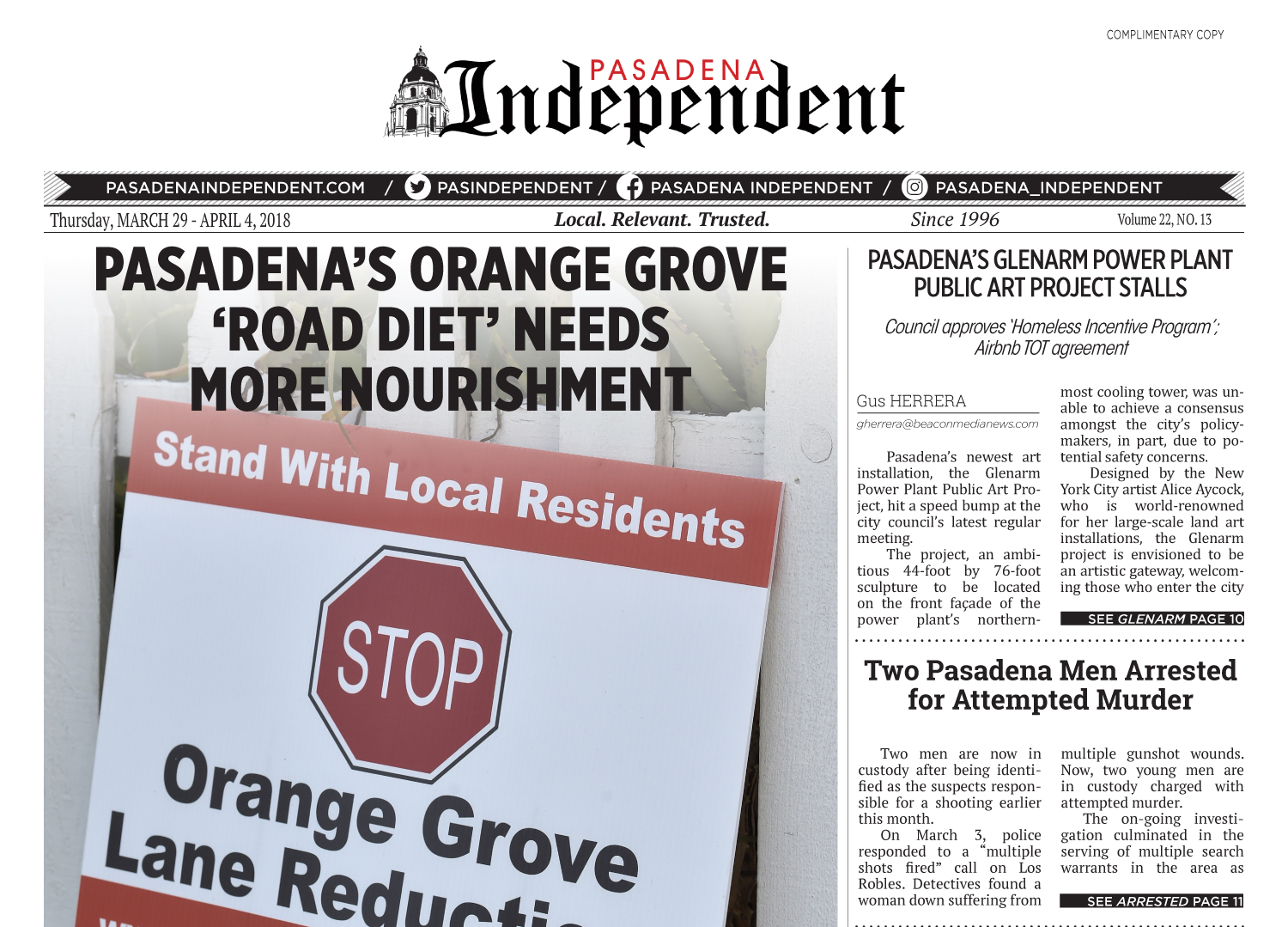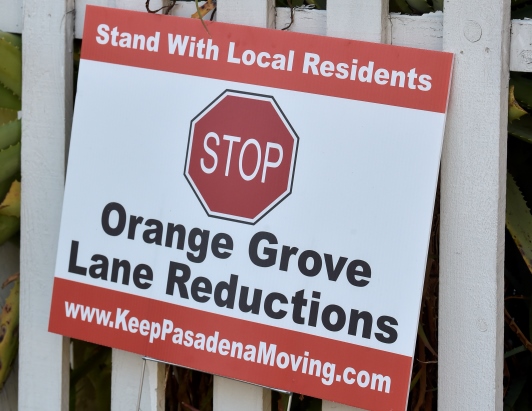
Council approves ‘Homeless Incentive Program’; Airbnb TOT agreement
By Gus Herrera
Pasadena’s newest art installation, the Glenarm Power Plant Public Art Project, hit a speed bump at the city council’s latest regular meeting.
The project, an ambitious 44-foot by 76-foot sculpture to be located on the front façade of the power plant’s northernmost cooling tower, was unable to achieve a consensus amongst the city’s policymakers, in part, due to potential safety concerns.
Designed by the New York City artist Alice Aycock, who is world-renowned for her large-scale land art installations, the Glenarm project is envisioned to be an artistic gateway, welcoming those who enter the city from Arroyo Parkway’s 110 Freeway off-ramp.
The project’s vision statement reads:
“Public art at the Glenarm power plant is envisioned to be an iconic and innovative gateway for Pasadena. The project should be experiential, dynamic, and inspiring, making a strong visual statement about the city’s role as a leader in art, science, and technology. It will be seen day and night and may explore themes of energy, water, and sustainability.”
According to city staff’s report, the source of funding for the development of the project is “derived from two water and power capital projects.” The total project budget is $868,935 from the city’s capital public art fund and the recommended contract award for the artist Aycock is $740,000. The installation is expected to have a 30-year lifespan.

Although the project, which is still technically in the “conceptual stage,” was reviewed by both the municipal services committee and the arts & culture commission, some council members still held reservations.
Council Member Steve Madison voiced his concern over the proposed location, citing the daily traffic congestion along the 110 Freeway exit, “are people going to be looking over at our art, as they should be braking?”
Madison also reminded council of Art Center’s ambitious 15-year master plan, which is expected to completely re-define the character of the Arroyo Parkway/Glenarm intersection.
Council Member Gene Masuda similarly questioned the “distraction factor” of having a massive illuminated sculpture alongside one of the city’s busiest stretches.
Council Member Tyron Hampton, who attended the meeting via teleconference, challenged the accessibility of the project, “what is the public benefit? … the only way I can see this is if I have a car … I can’t walk down the freeway to see this art display.”
Public comment on the item yielded mixed reviews: one speaker dubbed the project a “million-dollar band-aid,” while others were thrilled at the idea of having a world-class artist leave her mark on the city.

Council Member Margaret McAustin and Mayor Terry Tornek both voiced support for the project.
“This is probably the most significant public art budget that we’ve had … maybe ever … I’m delighted that we’re going to see a significant piece of public art in Pasadena,” said McAustin, “it’s up to the driver to keep your eyes on the road … I don’t think that this project is intended to be designed so that it will be a visual distraction.”
“This is not going to be a Times Square or a Ginza-style billboard flashing and blinking,” said Tornek, “I don’t have any problem with it.”
In the end, a split council was unable to achieve a majority vote to approve the contract award, partly due to the absence of Vice-Mayor John Kennedy, so the item will return at a later time with a supplemental presentation and additional considerations for potential public safety impacts.
In other council news, the city continued efforts to combat homelessness: council approved a loan agreement with Heritage Housing Partners to acquire an affordable homeownership unit at 596 N. Fair Oaks Ave. and also gave the green light for a “Homeless Incentive Program” (to be funded by Los Angeles County’s Measure H).
The city council also approved a voluntary agreement with Airbnb to collect transient occupancy tax (TOT) on behalf of residents who rent their properties using the online service. According to staff’s report, conservative estimates predict that the agreement “could provide for the streamlined collection of more than $450,000 annually in TOT revenue.”






